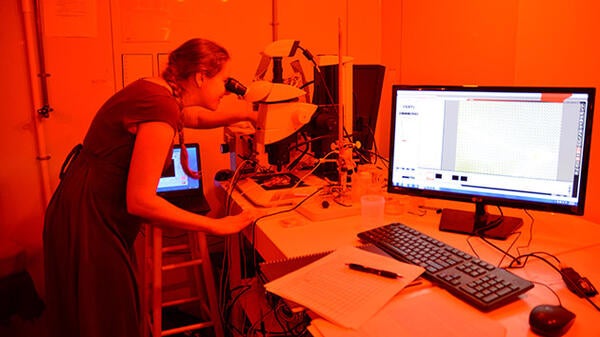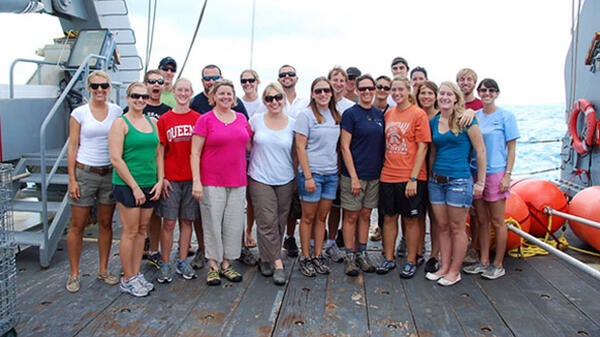For her research at BIOS, Amy Maas studies one of the ocean’s smallest organisms—a delicate, shelled animal the size of a peppercorn, called a pteropod—which helps her understand current changes in ocean acidity. This month she began a collaborative research project focused on even smaller creatures—microscopic foraminifera, more commonly called forams—that help scientists understand how Earth’s climate has changed throughout history.
New Study Links Global Ocean Processes with Local Coral Reef Chemistry
November 27, 2015
Five years of data collected on reefs and offshore in Bermuda shows that coral reef chemistry – and perhaps the future success of corals – is tied not only to the human carbon emissions causing systematic ocean acidification, but also to seasonal and decadal cycles in the open waters of the Atlantic, and the balance of biochemical processes in the coral reef community.
Grant Catalyzes New Study of Ocean Microbes at BIOS
January 01, 2016

St. George’s, Bermuda –– An anonymous donor has awarded BIOS $6 million to support collaborative research on the distinctive microbial communities of the Sargasso Sea over the next five years. The research will leverage ocean measurements and ongoing research at the Bermuda Atlantic Time-series Study (BATS) site, bringing new collaborations and technologies to study the ocean’s smallest life forms.
BIOS Unveils Citizen Science Initiative
September 30, 2020

This September, BIOS is debuting a new citizen science program designed to encourage Bermuda’s residents and visitors to engage with the natural environment by collecting data from around the island. By utilizing an array of online tools and apps, and working alongside BIOS educators, people have the opportunity to directly contribute to ongoing research at BIOS and local conservation efforts.
BIOS Scientist Awarded NSF Funding for Zooplankton Research
August 31, 2020

Earlier this year, Leocadio Blanco-Bercial, a zooplankton ecologist at BIOS, was awarded funding from the National Science Foundation (NSF) for a three-year investigation to determine how environmental variables, such as temperature and oxygen, influence the structure of zooplankton communities found within the ocean’s twilight zone (depths between 650 to 3000 feet, or 200 to 1000 meters), also known as the “midwater.”
Dissecting the ‘Black Box’ of the Ocean’s Biological Carbon Pump
February 26, 2012
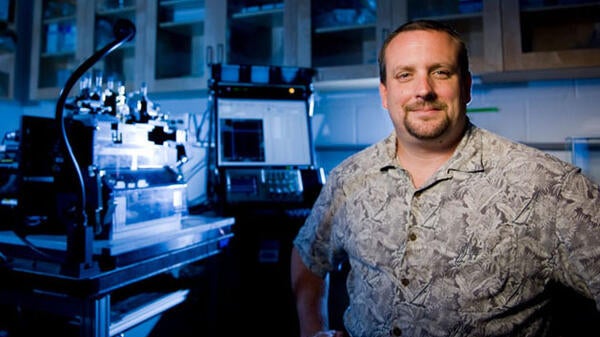
The global ocean absorbs roughly 25% of anthropogenic carbon dioxide (CO2) emissions. A significant portion of this is driven by the conversion of CO2 into organic compounds (e.g., photosynthesis) by single cell plants in the ocean, a process called the biological carbon pump. Despite the global importance of this process, it remains a daunting task to accurately predict the future strength of the biological carbon pump based upon existing knowledge and ocean ecosystem models. Furthermore, the response of phytoplankton physiology to changing ocean chemistry—such as ocean acidification—and the importance of previously underappreciated mechanisms of the biological carbon pump are additional complicating factors. The goal of this seminar is to present new and developing research on the ocean’s biological carbon pump.
Ocean Microbe Communities Changing, but Long-Term Environmental Impact Is Unclear
April 27, 2012
Source: Sciencedaily.com
Our Unique Pink Sand
April 27, 2012
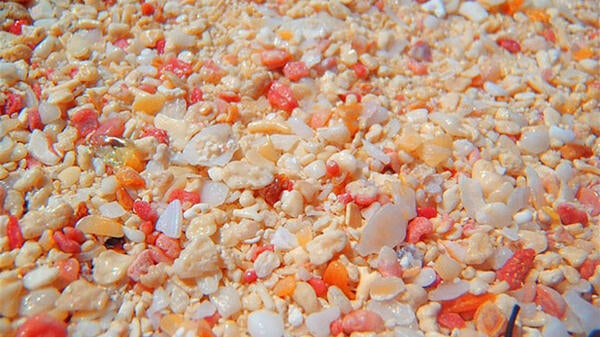
Pink sand. It makes Bermuda’s beaches some of the most beautiful and picturesque in the world…but what makes it pink?
Under-Researched Marine Organisms Play Larger than Life Role in Ocean Chemistry
August 26, 2012
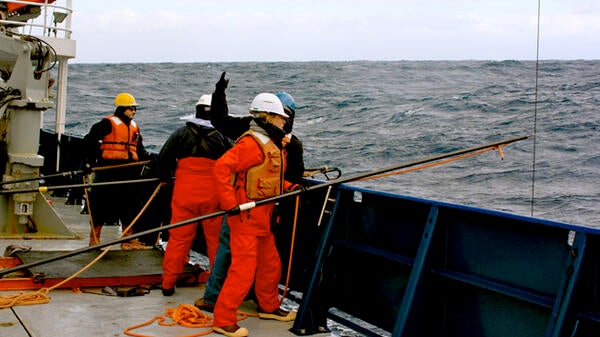
Earlier this year, scientists wrapped up the second research cruise, as part of a multi-year project investigating a feature of the Southern Ocean known as the Great Southern Coccolithophore Belt (Great Belt). Coccolithophores are a type of phytoplankton with a unique exoskeleton composed of calcified platelets (coccoliths), giving them the appearance of being heavily armored.
